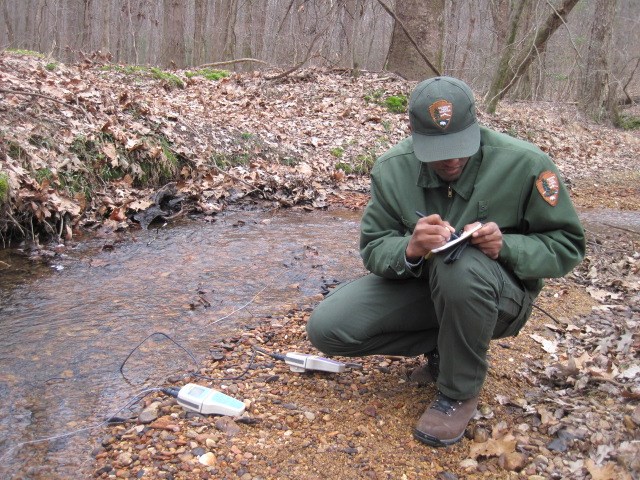
NPS Photo
The first major battle of the Civil War's Western Theatre occurred at Shiloh in 1862. It was a two-day battle resulting in nearly 24,000 casualties and a decisive victory for Union forces, who later went on to seize control of the Confederate railway system in Corinth, Mississippi. Shiloh National Military Park was established in 1894 to preserve the battle scene and is approximately 6,000 acres. The park contains historic fields where the major portion of the battle was fought, surrounded by alluvial floodplains, mixed bottomland and swamp forests, steep river bluffs, and rock outcrops.
The Cumberland Piedmont Network I&M program has provided this park with a vegetation community classification and map, a wetlands inventory, and updated vascular plant and vertebrate species lists. During the vegetation community classification work, 27 distinct associations were documented and mapped, including rare floodplain forests and wet flatwoods.
The network monitoring program at this park includes four vital signs that involve repeated visits to established sites, following procedures established by each monitoring protocol. These four vital signs are: forest vegetation communities, invasive species early detection, ozone/foliar injury, and water quality. Water quality monitoring began in 2005 and continues on a monthly schedule for two years "on," five years "off," at seven sites, ranging from small perennial springs and creeks to the Tennessee River. Forest monitoring began in 2011–2012 with the establishment of 16 long-term monitoring plots. More plots will be established in upcoming years, followed by a five-year revisit schedule, occurring in June. Ozone levels and foliar injury are assessed on-site every six years, beginning in 2009. The Invasive Species Early Detection protocol was completed in 2012 and will be used by field crews to monitor for priority exotics during their scheduled field work.
Park managers are using inventory and monitoring data to create resource stewardship strategies for achieving desired future conditions. The links to inventory and monitoring reports are provided on this page.
For more Information contact:
Steve Thomas, Network Program Manager, CUPN offices at Mammoth Cave NP
Select a Park:
Select a Species Category (optional):
Visit NPSpecies for more comprehensive information and advanced search capability. Have a suggestion or comment on this list? Let us know.
Last updated: January 12, 2021
